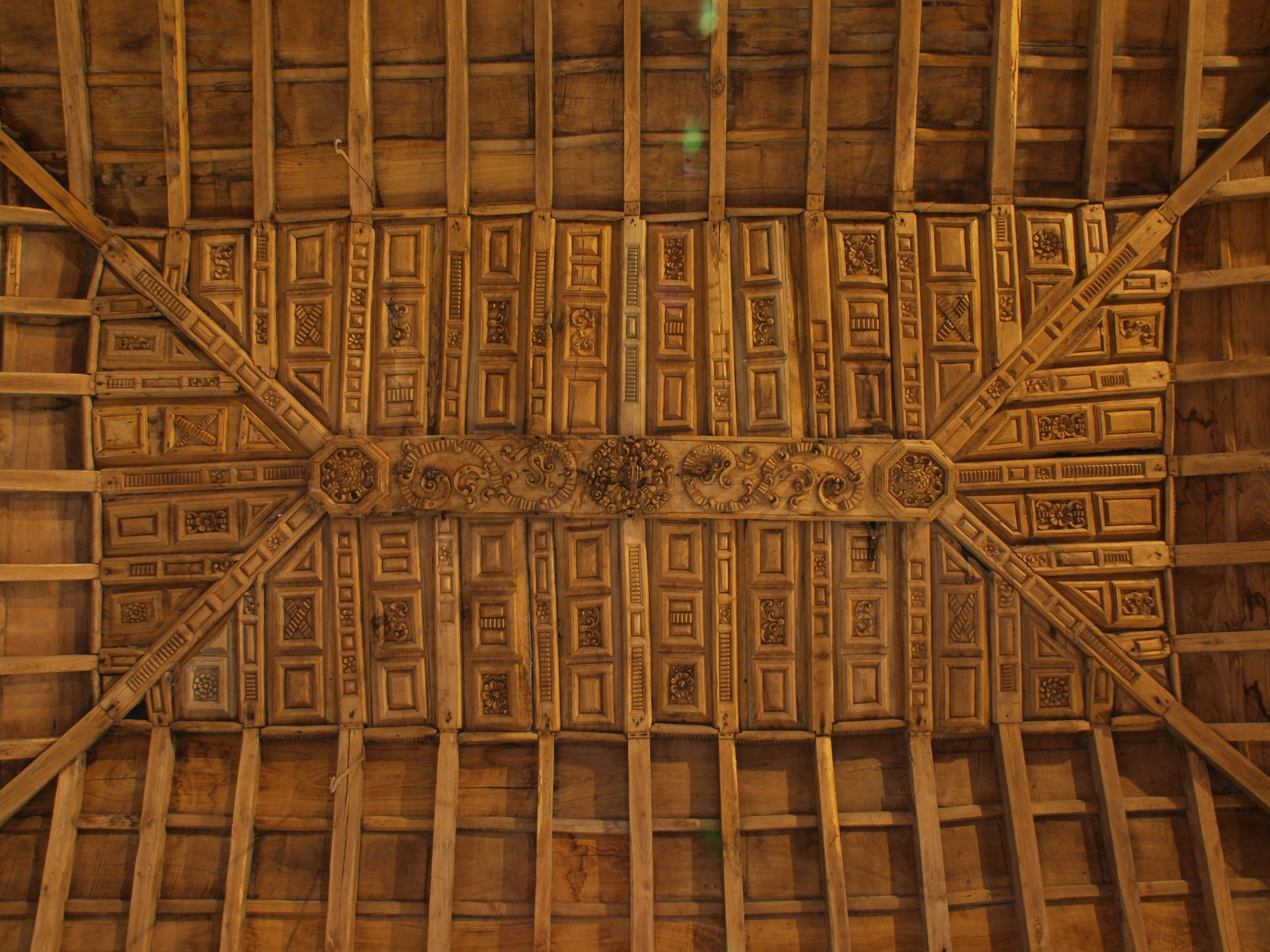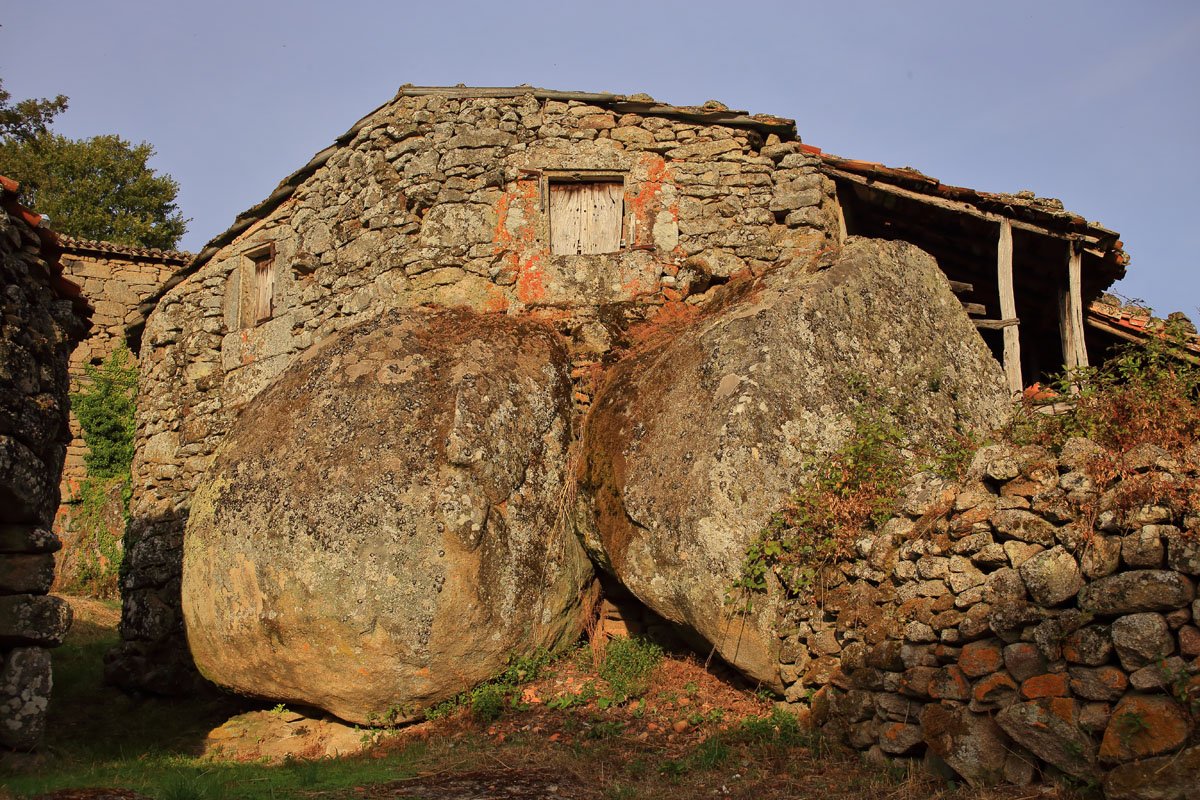In Vilariño de Lama Má (meaning “bad mud”), we find the parochial church of San Cibrao (Ciprián).
It was built in the eighteenth century. The astonishing façade stands out, not only for its height, but also for its varied decoration. Several surprises are hidden indoors, like the coffered ceiling, the altar’s retable, a Rococo style triptych and the remainders of a Renaissance painting, representing Santa Lucía.
Knowing the importance of Baños de Molgas and Maceda all throughout the Middle Ages, it is worth taking our time to observe the coats of arms found on the façade:
We can see two coats of arms of noble families: the one from the Marquis of Villaverde de Limia and another one from Soutelo de Nóvoa.
The Marquis of Villaverde’s family has its origins in the Soutelo the Nóvoa one, from the neighbouring village of Xocín. The common ancestor of both families was Antonio Soutelo de Nóvoa, who became Maestro de Campo and Caballero de la Orden de Santiago.
The Soutelo’s coat of arms represents five chestnuts in saltire cross. It was located in the façade by order of Manuel Soutelo de Nóvoa, who was part of Lama Má’s patronage in 1760.
In another part of the façade we see an inscription saying: IT WAS BUILT BEING ABBOT SR ALONSO DE MIRA Y SOTOMAIOR. YEAR 1762.
A historical curiosity: Vilariño de Lama Má used to be Vilariño da Torre.
The church used to be close to Lama Má, on the left bank of the Arnoia river, almost a kilometre down that place. In 1760 it was moved to Vilariño (now it is called Lama Má). Up until that moment the village was known as Vilariño “da Torre” (of the tower) as a reference to the stately house of the Soutelo de Nóvoa’s family.
A little bit of history:
Alonso de Mira Feixoo Enriquez de Nóvoa e Soutomaior (local and lord of the Casa de Reza) was the Lama Má’s “abbot” since 1744. In 1760 he ordered the move of the church from Lama Má to Vilariño, as it is explained on the façade’s inscription.
Five hundred years ago, in 1230 Ourense’s bishop gave this parish to the Cóengos Regulares de Santo Agostiño from Xunqueira de Ambía. This is the reason for the patronage in the following centuries.
In 1235, Don Pedro, Lama Má’s abbot accompanies the armed groups which marched to the “Reconquista”, taking with him the Santo Cristo de los Desamparados. He also founded the Pedro Abad’s house in Córdoba, where he died at the age of 96. This is the reason why the two villages are twined.
Data gathered by Elixio Rivas Quintas – Studies in Genealogy, Heraldic and Noble Connections of Galicia.
The legend of Lama Má’s parish:
Many years ago, some nuns came to Lama Boa (good mud) and Lama Mala asking for alms. The ones from Lama Boa didn’t give anything and they treated them badly, so they received divine punishment. When the nuns came back they realised Lama Boa had disappeared, it had sunk and in its place Veiga de Francos, Xocín and Calvelo had been created. The ones from Lama Mala weren’t as bad as their name shows because there is where the three villages: Calvelo, Xocín and Vilariño were created.
That is why we can’t write La Mamá parish or Lamamá parish. We have to write it as Lama Má parish.
(Legend gathered by: Ambrosio Borrajo)
Data gathered by Jose Antonio Gavilanes for the union Patrimonio Galego.
http://patrimoniogalego.net/index.php/17017/2012/04/igrexa-parroquial-de-lama-ma-san-cibrao/





